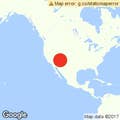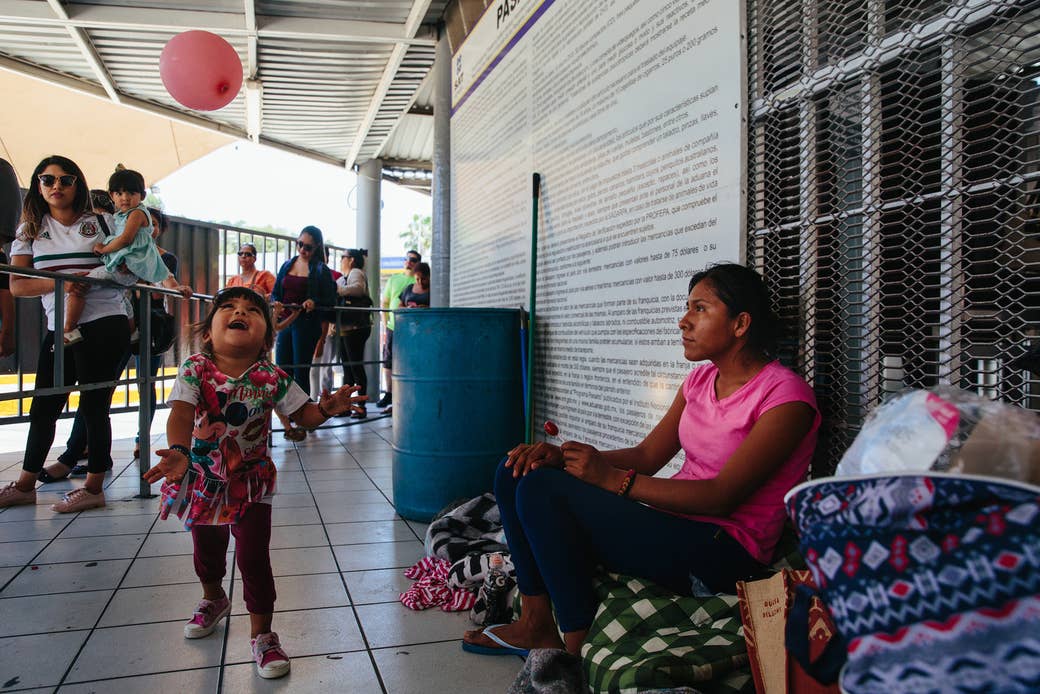
Danah Taylor tucks her legs under her and begins rifling through her backpack, a sly smile on her face as the four small children pause to study her. Taylor’s smile grows as she produces a package of bubbles from her bag, freezing the children in sudden awe.
“Siéntate aquí,” she says, motioning to an open space on the aging gym mats that serve as beds for the eight families and teens living in the shaded walkway of the international port of entry between Mexico and the United States.
Taylor, a 24-year-old resident of Tucson, Arizona, is part of a small army of volunteers who have begun trekking to border towns like Nogales hoping to do something — anything — to help the thousands of families who have come to America’s door looking for refuge from violence in their home countries.
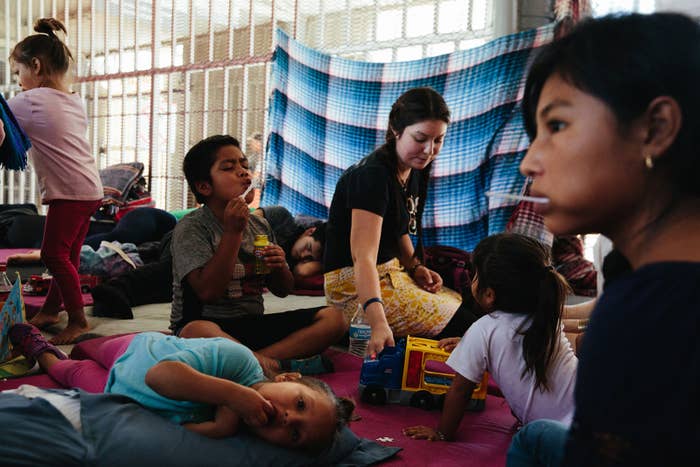
Carefully dipping the wand into a tube of bubbles, Taylor sits up on her knees, looking down at her attentive audience. With parents and hundreds of other people who are waiting in the slow-moving immigration line looking on, she softly blows a stream of tiny bubbles above children's heads. Within moments, the walkway is filled with the squeals of laughing children as they chase the delicate bubbles dancing through the hot summer air.
It’s a welcome respite for their tired parents — most of whom are barely old enough to not be considered children themselves — who have found themselves at the center of an ugly international scandal over the Trump administration’s harsh treatment of immigrants.
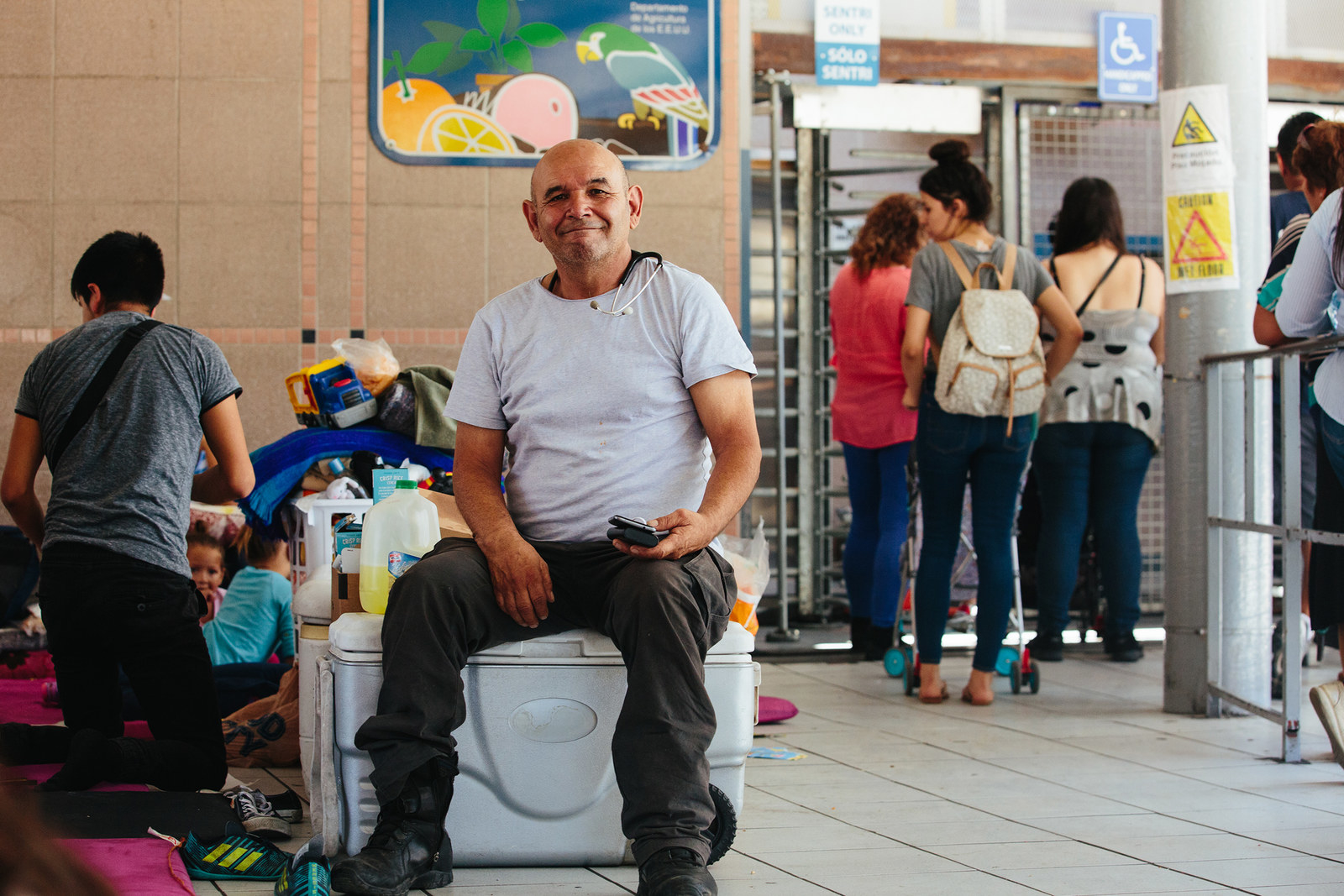
According to Francisco Olachea Martin, a human rights worker in Nogales, 150 families have come to this small border town looking for asylum. “We’ve never seen anything like this,” says Olachea, a nurse who for the last decade has provided medical care for immigrants and homeless citizens of Nogales through his nonprofit Panchito y Su Cristina. The closest thing, he says, was when dozens of Haitian refugees arrived in town. “But those were single men,” he says. “It was different.”
Indeed, for years most of the shelters in Nogales have primarily dealt with deportees, thanks to ever-increasing levels of deportations during the Obama administration.
But from the end of April, families and unaccompanied teens began showing up. Most come from Central America, though families from Mexican states where drug cartels are practically the de facto government, such as Guerrero and Sinaloa, are also coming.
Two weeks ago, 22-year-old Romelia Guadalupe decided to flee her home in Sinaloa. The father of her 2-year-old daughter, Aylin, is involved in a local cartel, she says. “He was threatening to kill me,” she says matter-of-factly as Aylin plays with a pink balloon.
Given the rampant corruption in Sinaloa, Guadalupe had nowhere to turn for help. She’d heard from family that the US grants asylum to people threatened by gangs — which, while technically true, is extremely rare in the case of Mexican applicants. Though she knew there was a chance the US would take her daughter from her, Guadalupe decided to risk it, hoping to provide Aylin with a chance at a better life.
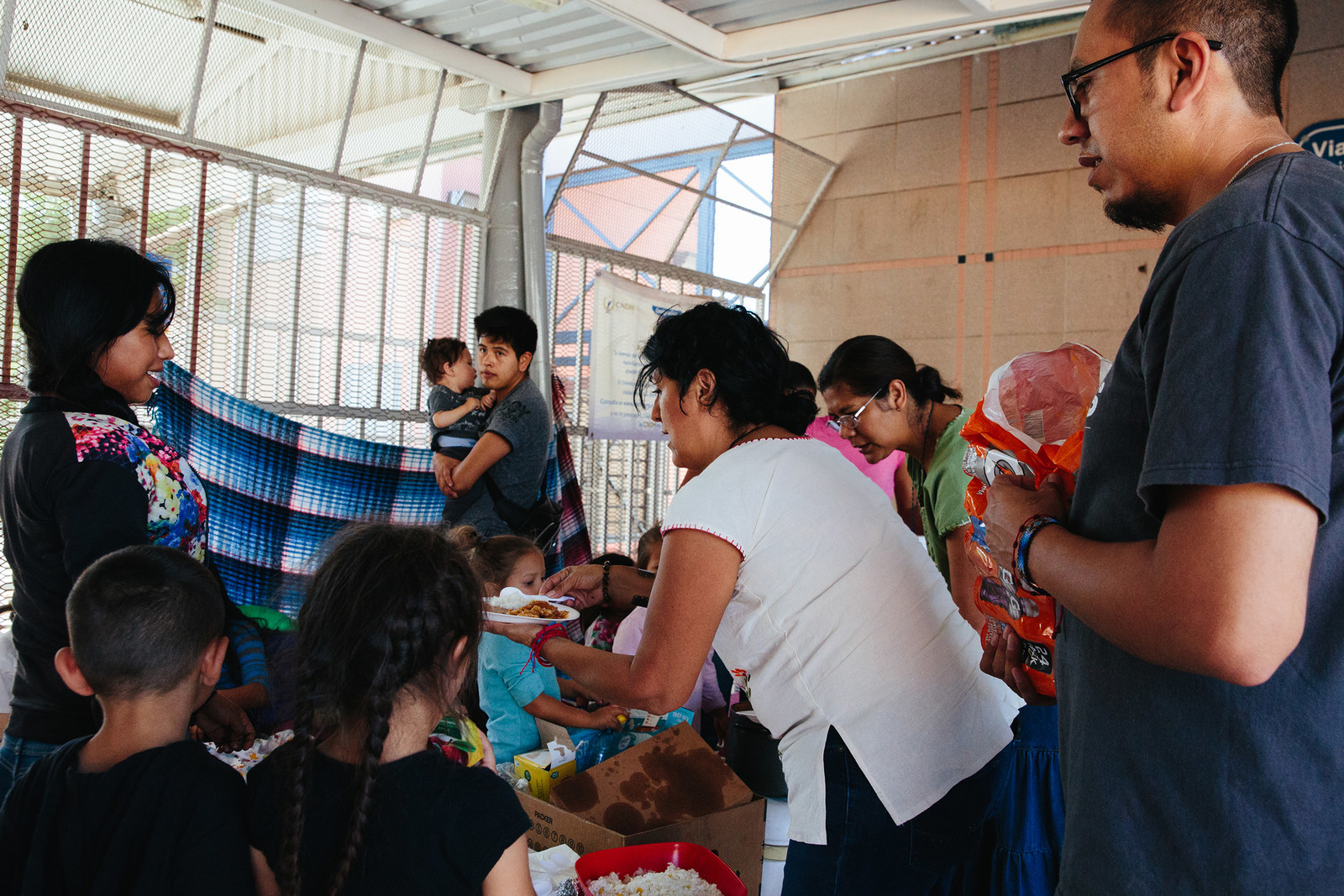
While most of the families and teens are housed in one of the several privately run immigrant shelters in Nogales, 8 to 10 families at a time make their home in the walkway and patiently wait for US officials to talk to them. On good days, as many as four families will disappear behind the steel grate door to make their case for asylum. On bad days, maybe one or two families will be lucky enough to move on from this nightmarish waiting room. And there are lots of bad days.
To date, neither the US nor the Mexican government has seen fit to provide aid to the families that have begun to stack up in Nogales and other border towns. And so taking care of them has fallen to the network of human rights groups and churches that operate the already full shelters and kitchens in Nogales, and increasingly individual citizens of both countries.
Each day, members of the Kino Border Initiative — a cross-border nonprofit coalition that includes Jesuit priests and nuns from the Missionary Sisters of the Eucharist — bring breakfast and dinner to the families camping at the border crossing. Throughout the day, Olachea coordinates the near constant flow of donated clothes, toys, games, and food, sending some to those camping out and the rest to various shelters across the city.
Although Kino and other nonprofits here have networks of donors and supporters on both sides of the border, Olachea says most of the donations are unsolicited gifts from individuals, who were moved by the images of crying children separated from their parents by the Trump administration.
“Even people in the [immigration] line, some of them will get out of line to go buy something — some water, some food, anything — and come back to give it to them. Even an apple they have in their bag,” he says.
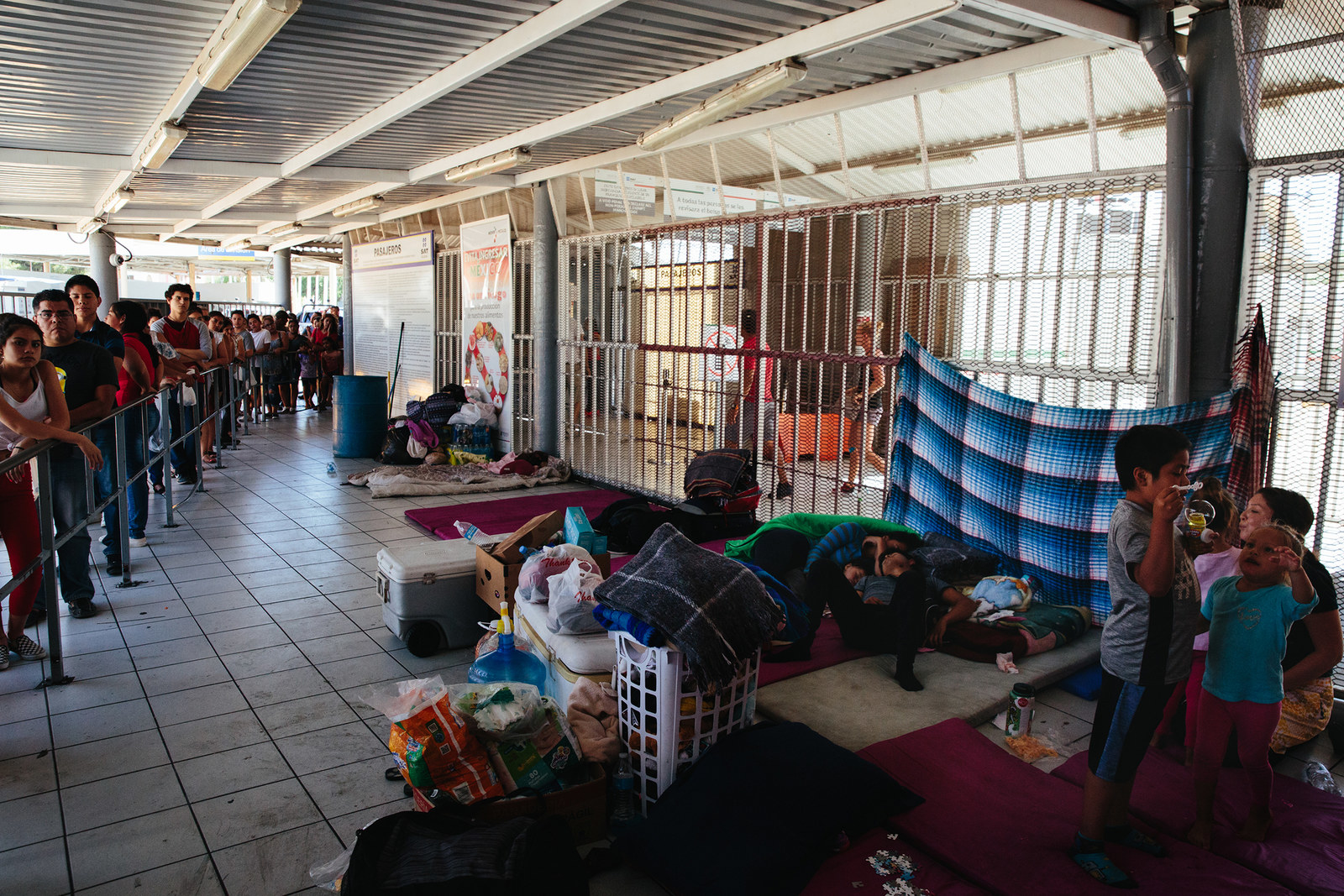
When Danah Taylor woke up Saturday, she wasn’t planning on coming to Nogales. In fact, she wasn’t even that aware of what was happening on the border. “I don’t listen to the news normally,” she says.
Instead, Taylor was planning on taking a class on contract writing. But she ran late and ended up missing the class. Sitting in her car, she heard a story on the radio about the controversy over Trump’s separation policy, and about how scores of desperate families had now found themselves stuck in Nogales, waiting to try to seek asylum. That was all it took for her to make her decision.
Fluent in Spanish, Taylor went home and picked up some Spanish-language children’s books she had, packed them, and her bubbles in her backpack, and headed to the border. “It was meant to be,” she says simply of the events that led her to Nogales.

Taylor is far from alone in feeling compelled to take some sort of action as a result of the border crisis. On Saturday evening, a group of more than 20 men and women and 10 children gathered on the US side of the border fence that stretches the horizon in either direction like a massive, rusty scar, dividing Nogales, Arizona, and Nogales, Sonora.
Organized by the Mormon Women for Ethical Government organization, they’ve come from across Arizona and Utah to deliver some supplies and to hold a prayer vigil for the families that have been separated by the US government, as well as those still hoping to find asylum here.
As the sun begins to set, Andrea Dalton, a Phoenix resident who heads the group’s Arizona chapter, leads the group through a series of hymns in both English and Spanish. Members of the group read relevant passages from the Old Testament, the New Testament, and the Book of Mormon. Though there are a few reporters looking on, there’s no one around to witness the group’s simple, earnest expression of compassion and defiance.
Afterward, as the children sift through a pile of small paper monarchs — a symbol of the immigrant rights movement — that have been blown off an art installation on the wall, Dalton acknowledges that while the notion of fighting back against essentially the entire federal government can feel overwhelming, the border crisis was a tipping point.
“For a long time I thought there were people who were smarter, more capable than me who were handling everything, so I didn’t need to worry about it … but that isn’t necessarily the case,” Dalton says. “It’s really been a real wake-up call. And I was always the sort of person who watched the news and said, ‘Oh my gosh, that’s a shame. I hope they’re doing something about that.’ But I didn’t realize the ‘they’ included myself.”
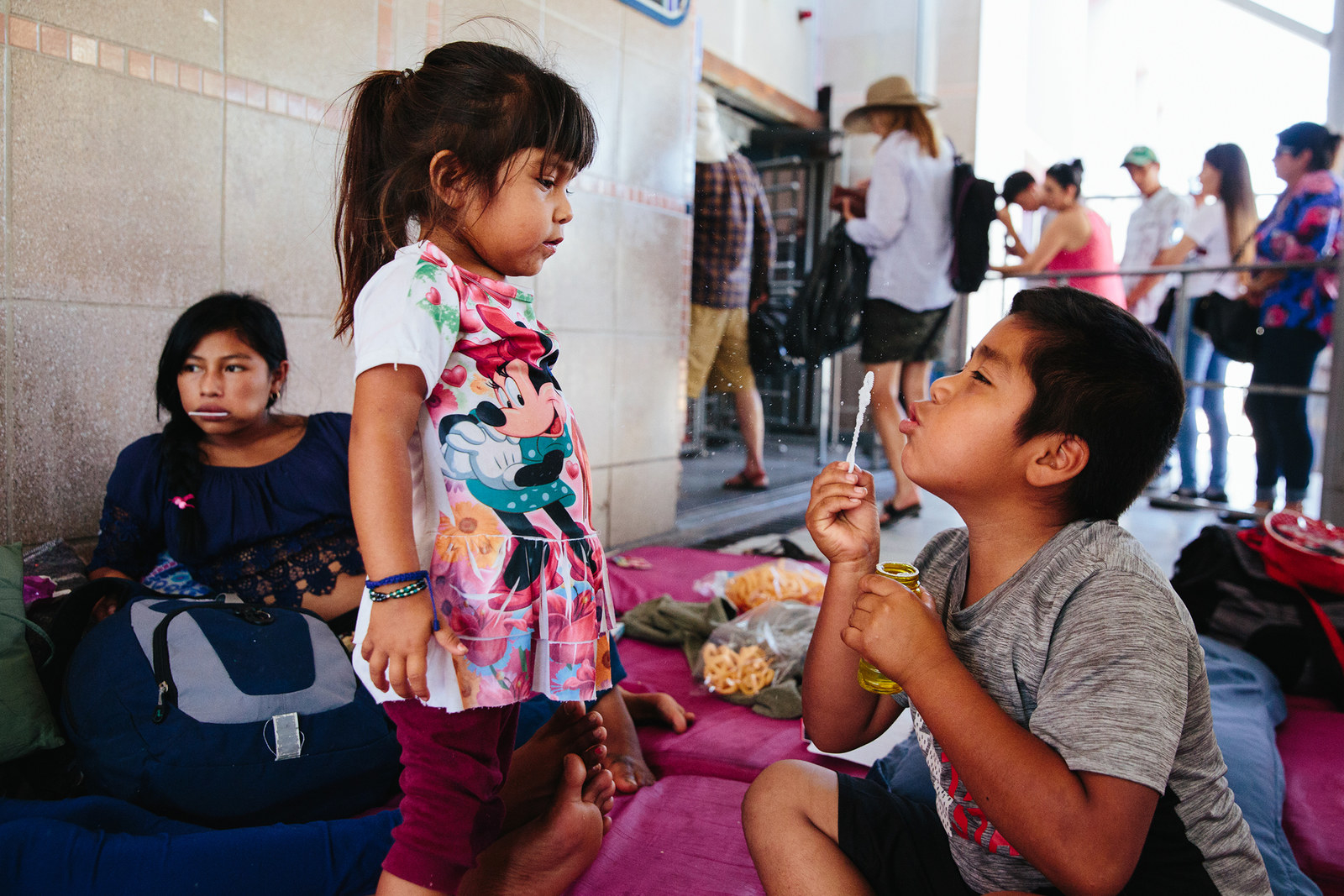
To say living in the border walkway isn’t comfortable would be a gross understatement. But the outpouring of help from strangers has, at least, made Marializ Guerrero Bautista feel safe. And feeling safe isn’t easy for the 14-year-old Guerrero native. Like many other refugees on the US's southern border, violence and terror is so commonplace as to become almost an afterthought, an assumed part of reality that is as predictable as the sun rising.
Asked why she left her home, Guerrero leans forward, her hands folding into her lap. Idly chewing on a lollipop, she says that her mother and stepfather live in New Jersey, and after her father passed away earlier this year she decided to try and join. It’s only later that she explains, almost off-handedly, that her father had been killed by members of a drug cartel.
Realizing that “the men that killed [her] father are capable of coming after [her],” and that her elderly grandparents were incapable of protecting her, she fled, Guerrero says.
It's said with a nonchalance you’d expect from a war veteran or a seasoned organized crime prosecutor, not a child who should be more concerned with her latest crush and schoolwork than the imminent threat of death.
I ask her if she’s scared still, and at first she brushes the question off. “I’m not scared. I feel very comfortable here because here there’s people giving us food and help,” she says.
After a pause, Guerrero shrugs a bit. “I get scared sometimes,” she finally acknowledges. “But this is the life I have been given, and I have to live it.”

